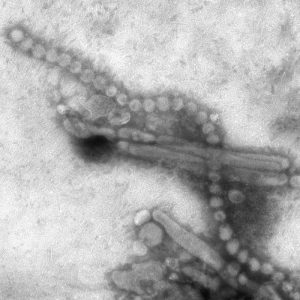577 human cases of avian influenza A(H7N9) reported in China to date
The Health and Family Planning Commission of Guangdong Province (GDHFPC) has reported an additional human case of avian influenza A(H7N9), making it the 166th case of the bird flu reported in the southern China province since Mar. 2013.

Image/CDC
According to the GDHFPC, the patient is a 48-year-old woman who lives in Shantou. She is currently hospitalised for treatment in critical condition.
To date, 577 human cases of avian influenza A(H7N9) have been reported by the Mainland health authorities, respectively in Guangdong (166 cases), Zhejiang (156 cases), Jiangsu (70 cases), Fujian (58 cases), Shanghai (45 cases), Hunan (24 cases), Anhui (17 cases), Xinjiang (10 cases), Jiangxi (nine cases), Shandong (six cases), Beijing (five cases), Henan (four cases), Guangxi (three cases), Jilin (two cases), Guizhou (one case) and Hebei (one case).
This brings the cumulative total to 596 cases since March 2013, which includes 12 imported cases seen in Hong Kong, one in Malaysia, two in Canada and four in Taiwan.
Avian influenza A (H7N9) is an influenza (flu) virus found in birds that does not normally infect humans. However, in spring of 2013, China began reporting infections with the virus in people. Most of these infections have been associated with contact with infected poultry or contaminated environments (such as poultry markets) in China. Early symptoms are consistent with seasonal flu and may include fever, cough, sore throat, muscle aches and fatigue, loss of appetite, and runny or stuffy nose. However, infection with this virus often causes severe respiratory illness and, in some cases, death.